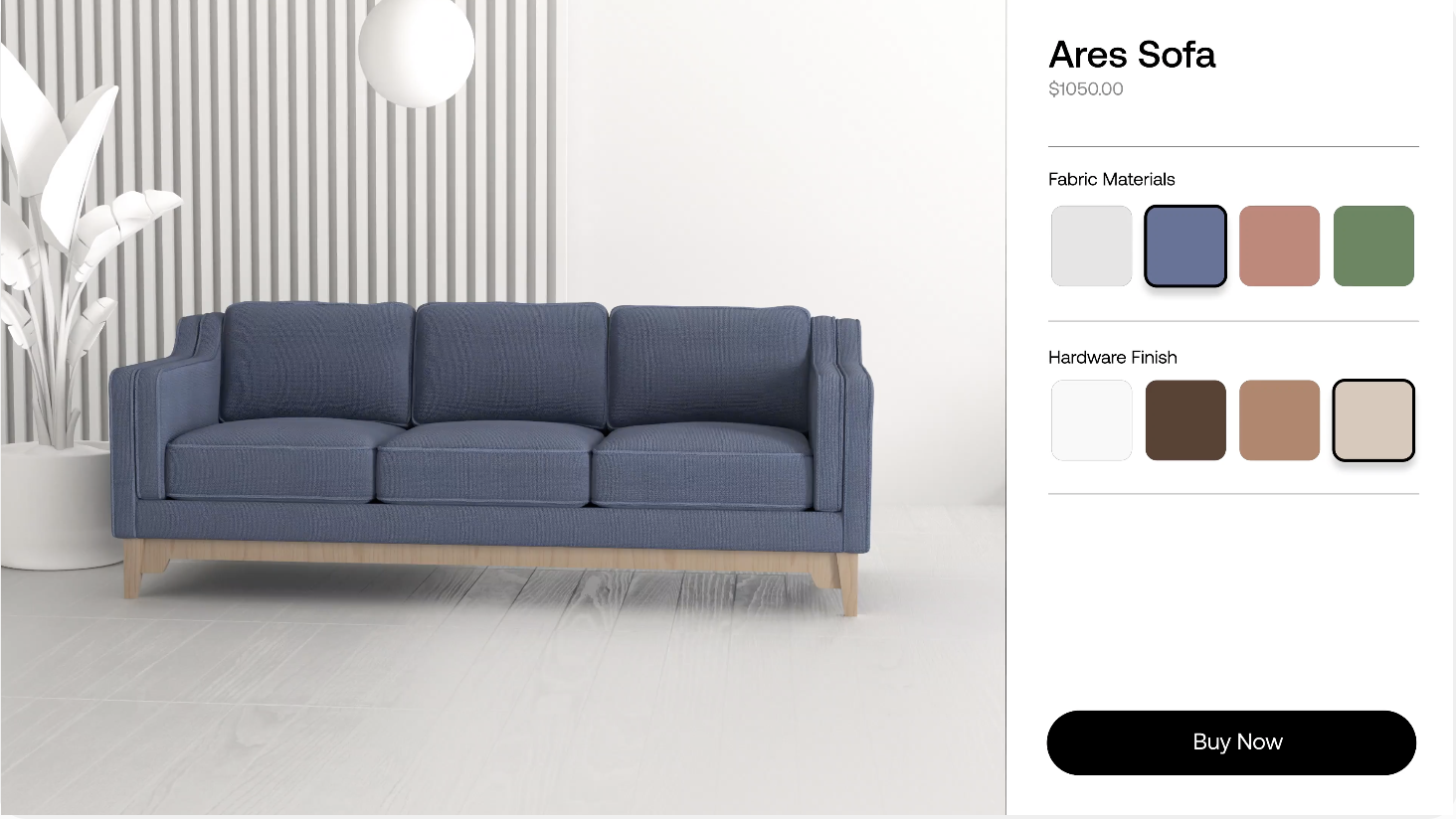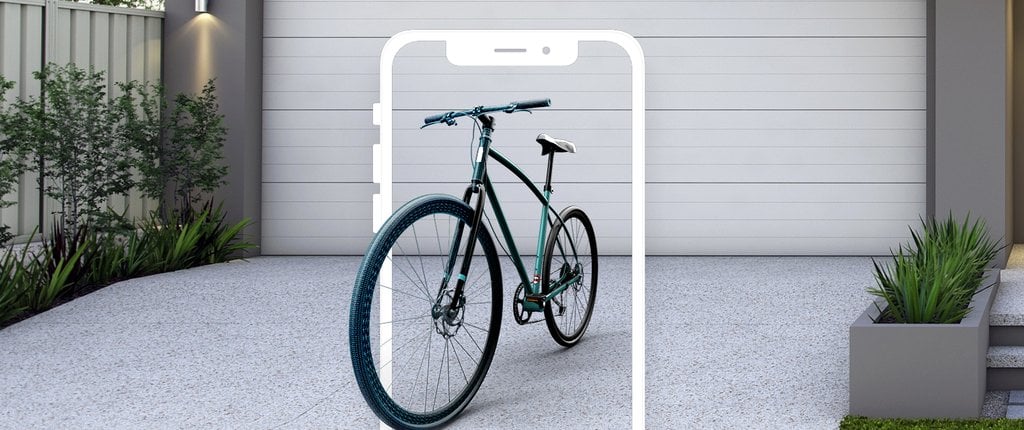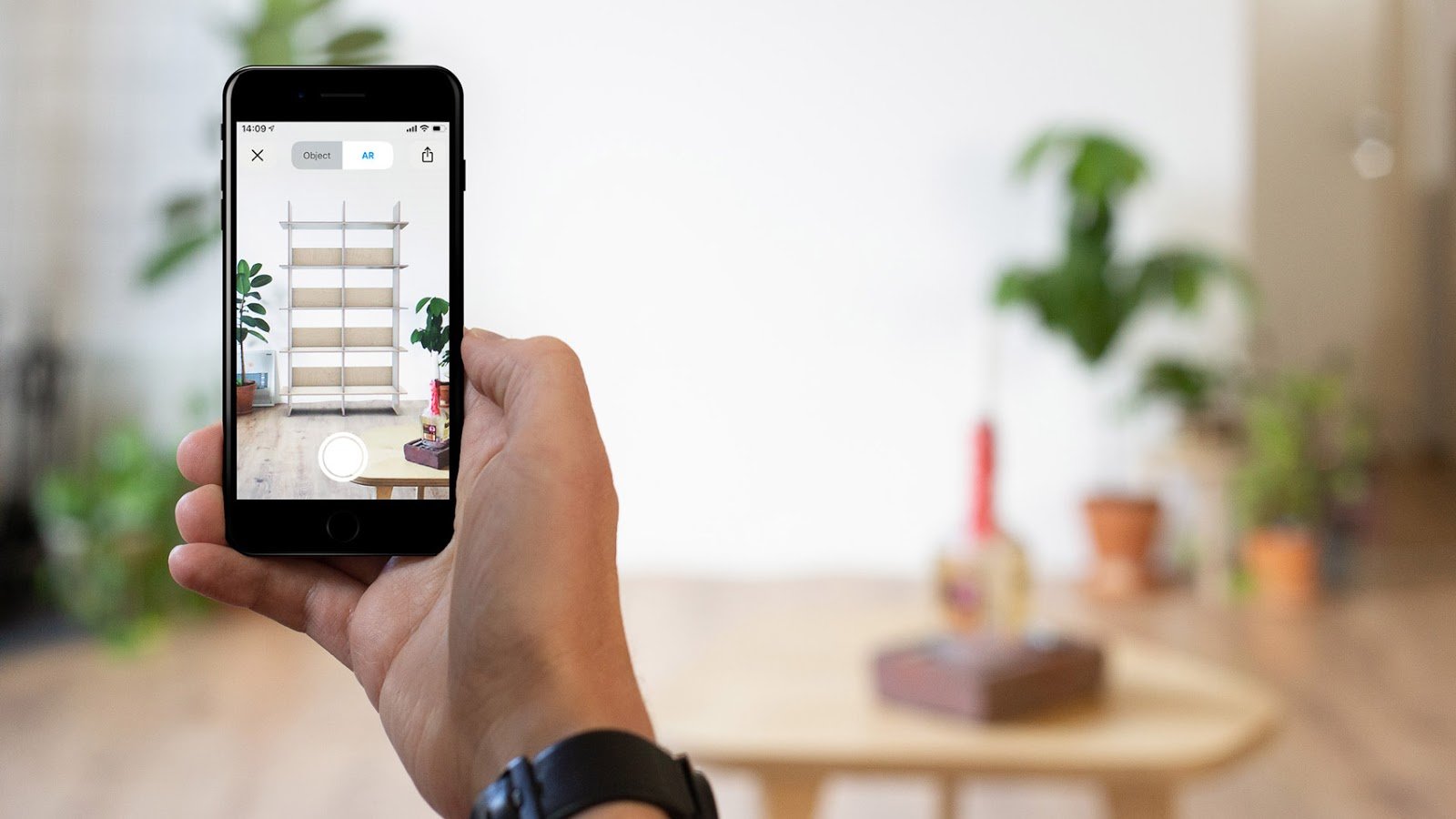Augmented Reality for eCommerce: Everything You Need to Know
If you've ever wondered what exactly augmented reality for eCommerce was and why you're seeing it used more and more by leading retailers, you're in the right place. Let's take a closer look at how this innovative technology works–and how you can use it to put your brand ahead of the competition.
What is augmented reality?
Augmented reality refers to technology that lets people view computer-generated elements in the physical world. Typically, it's done through the camera of a mobile device.
For example, if you want to know what a new couch would look like in your living room, you can use specially designed augmented reality apps to virtually place a 3D model of the couch in your home. Augmented reality applications allow you to use your phone to see the full width, height, and color of the couch from multiple angles, all within your actual living room.
Augmented Reality vs. Virtual Reality
Augmented reality is a cousin of virtual reality, but they are not the same.
Virtual reality allows users to explore a completely digital world, often through specialized headsets.
Augmented reality, on the other hand, superimposes virtual elements onto the real world in real time. No equipment beyond a cell phone or computer camera is needed.
Types of AR Applications
Augmented reality applications are becoming increasingly common. Whether it's the mobile game Pokémon Go or the virtual try-on app Warby Parker uses that lets shoppers see themselves with a fresh pair of glasses, AR experiences are taking over.
While the most common kind of AR applications involves 3D models of products or virtual try-ons, there are many kinds of AR applications.
Some AR apps layer an image-distorting digital filter over the physical world. The face-changing effects on Snapchat are an example of this type of augmented reality, as is Sephora's Virtual Artist tool, which lets consumers see how they would look in new makeup.
Other kinds of AR applications use phone scanning technology to allow consumers to easily access more information about the products. For example, some restaurants are adding scannable AR elements to their menu that let diners see what their meal will look like before they order.
News outlets like the New York Times are increasingly using this kind of AR technology to create more immersive experiences and bring their stories to life.
Other AR applications apply the computing power of mobile devices to the physical world. The Measure app, which comes standard with Apple phones, uses augmented reality to discern the length and height of objects in the real world, allowing iPhone to measure objects without scrambling for a ruler.
How is AR used in eCommerce?
Some of the most exciting use of AR apps come from eCommerce brands.
Today, 41% of retailers incorporate augmented reality into their websites, and a full 49% plan to in the future. Why? Because AR can offer users a superior experience to both traditional eCommerce sites and in-person visits to brick-and-mortar stores.
Today's consumers can virtually try on clothing and accessories from the comfort of their own homes, see how well a new desk will fit in their recently renovated home office, and examine all sides of a new kitchen mixer without leaving their computer, let alone having to go to a physical store.
AR is becoming a boon to both big and small businesses alike because consumers can see the difference it makes. A tape measure can tell you if a new couch will fit in your living room, but augmented reality can show you how it will look there. That's a big difference–and one that consumers are increasingly willing to pay more for.
Before online shoppers add a product to their shopping cart, they want to be sure it's what they want. By examining a product from all sides, or virtually trying on a full outfit, the try-before-you-buy experience of AR is giving consumers a new level of confidence in online shopping.
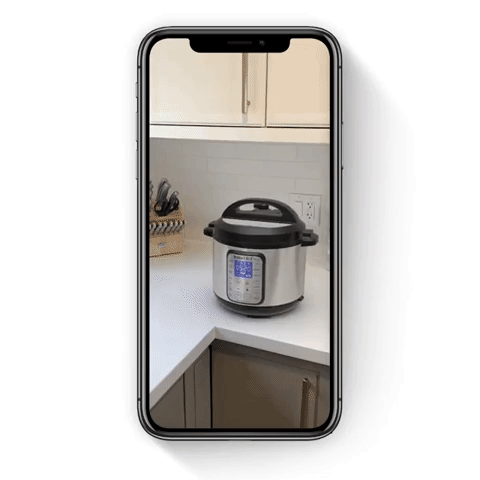
AR for Marketing Campaigns
Augmented reality is also rapidly changing the advertising world. By allowing consumers to shop at virtual pop-up shops, discover exclusive downloads, and learn more about products with a simple scan of their mobile devices, AR is making marketing more engaging and interactive.
With AR's new technologies, users can scan printed materials with their phone to access a wealth of new information about the product or service that's been advertised. A magazine ad for a tropical hotel might include a QR code that pulls up a video showcasing its amenities. Scanning an AR-enabled business card can directly connect you to the cardholder's LinkedIn profile or personal website. Educational institutions like museums and zoos can add augmented reality elements to their maps, allowing first-time visitors to see a 3D rendering of the space to make navigation easier.
AMC Theaters recently added augmented reality elements to their movie posters, allowing users who view the posters through their cellphone cameras to access information like cast lists and trailers.
Also, hotels and AirBnB hosts alike have created virtual tours that allow users to see 360-degree views of rooms so that consumers know the exact size and layout before they book.
The immersive and engaging experiences that augmented reality offers consumers are unrivaled, and advertisers are finding ever more creative ways to keep customers connected with their products and brands.
Augmented Reality eCommerce Examples
The biggest names in consumer goods and electronics are making smart use of augmented reality. They show that, in many ways, AR can be better than in-store experiences for today's consumers.
Swedish furniture superstore IKEA created its own AR app for eCommerce that works with both iOS and Android systems. Ikea Place allows users to virtually place photorealistic, true-to-size 3D models of IKEA furniture in their homes.
Amazon's app, AR View, does the same thing for thousands of Amazon-sold home goods. An app by Home Depot functions similarly, but for painting. Using their Project Color app, Home Depot customers can virtually turn their walls new colors and see how the hue and finish will look in their homes, even taking into account real-life factors like lighting and shadows.
All three apps work by using a phone scan of your room to determine its dimensions, then overlaying a 3D model or filter on top of the room at the correct correct height, width, shading, and depth.
Apple is also investing a slew of AR products. It currently boasts one of the best AR solutions for developers, called ARkit, which was used to create IKEA's app and several others, leading to seamless functionality in Apple's iOS.
Even more creatively, shoemaker Airwalk launched a slew of invisible pop-up stores in 2010 that were accessible through the brand's AR app. Consumers had to travel to specific locations to "unlock" the store, which sold exclusive items and provided discounts. The result was a new kind of consumer experience, and it paid off royally. Not only did online sales spike, the company also received more than $5 million in media coverage.
Augmented Reality for Small Business
Large brands may be leading the AR revolution, but small businesses have many options to add augmented reality experiences to their online stores without breaking the bank.
For many small businesses, the best way to use AR is by adding browser-based AR elements. Browser-based AR platforms like Threekit make use of technology embedded in web browsers and work across desktop and mobile platforms. This saves small businesses from having to develop expensive apps and then lure users into downloading them.
eCommerce platforms like Shopify, Magento, and WooCommerce allow small shops to use Threekit's browser-based AR tools. 3D and AR elements increase conversion rates on Shopify stores by up to 250%–and adding AR elements is simpler than you might think.
Small businesses using these platforms can convert traditional photography into photorealistic 3D images that shoppers can view from multiple angles, customize, and virtually place in their homes.
Adding AR elements increases consumer confidence in the product and creates a much more immersive and engaging experience. That's vital. According to PwC, almost three-quarters of online consumers say that the shopping experience is an important part of their buying decisions–which makes it more important than the quality or price of a product.
In addition, eCommerce stores that added augmented reality features to their Shopify sites had 40% fewer returns.
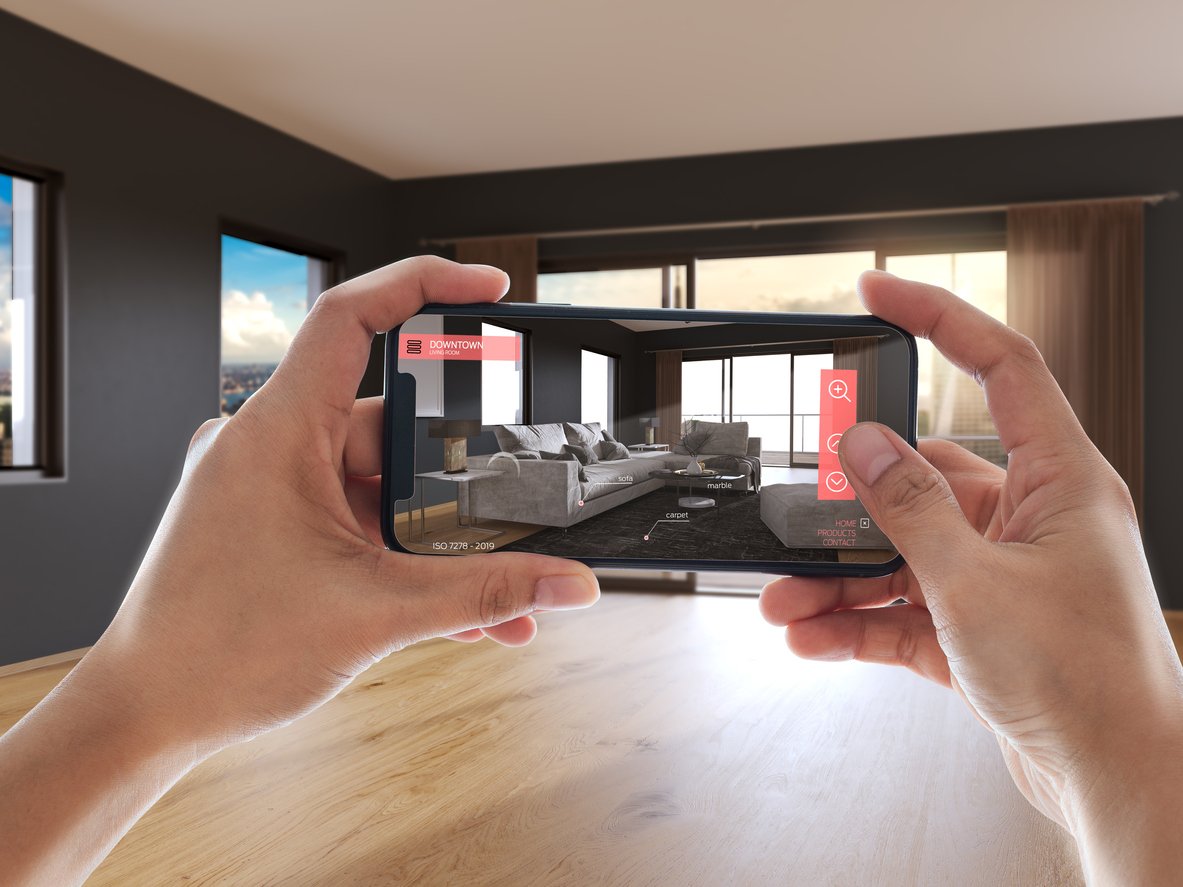
Augmented Reality for B2B and Manufacturing
Augmented reality is the best way to bring a customizable product to life and close the deal for B2B sellers.
Creating a customizable 3D model that your customer can customize and virtually place in their business makes all the difference in B2B sales.
Using augmented reality, B2B consumers can personalize the product, share it with their entire team for feedback, make adjustments, and send the specifications back to you without unnecessary complications.
Plus, AR platforms hold several cost- and time-saving benefits for manufacturers, such as built-in automated pricing that adjusts as customers change their customizations. Many AR platforms can also automatically update assembly instructions as customers change their options.
Augmented reality can also be invaluable for finding and fixing manufacturing errors. By allowing creators and customers to examine 3D models, businesses can better understand their prototypes, flaws and all. With a more in-depth look at their prototypes, manufacturers can move quickly to make adjustments.
How to Add AR to Your eCommerce Website
Adding AR features to your website gives users a significantly more engaging experience. When compared with consumer behavior on traditional eCommerce sites, online shoppers who surfed to pages with interactive 3D elements spent significantly longer on the website. An average session on an AR-enabled site lasted an average of five minutes, compared to less than a minute spent browsing typical stores.
Adding AR elements to your site can seem daunting, but many platforms take care of the heavy lifting for you. Threekit can use 3D files or photography to prepare 3D models for your business.
Find out more about how to get started with Threekit.
What's the future of augmented reality in eCommerce?
Augmented reality is just getting started. While many uses abound, it's a good bet that creative companies and marketers will continue to find new ways to implement AR apps in the coming months and years. In March 2021, Facebook announced that fully 20% of the workforce is dedicated to developing AR and VR products and services. And, as eCommerce continues to become more sophisticated, it's clear that AR apps will have a very big role to play in attracting and keeping potential customers.
Whether that comes from creating better products, making everyday objectives more customizable, or providing superior brand experiences, it's clear that AR is the way that startups and established eCommerce businesses alike can differentiate their products and deliver better products and services to their customers.
To learn more about how you can provide your customers with a highly personalized, immersive shopping experience that puts your brand ahead of the competition, schedule a demo today with Threekit.
